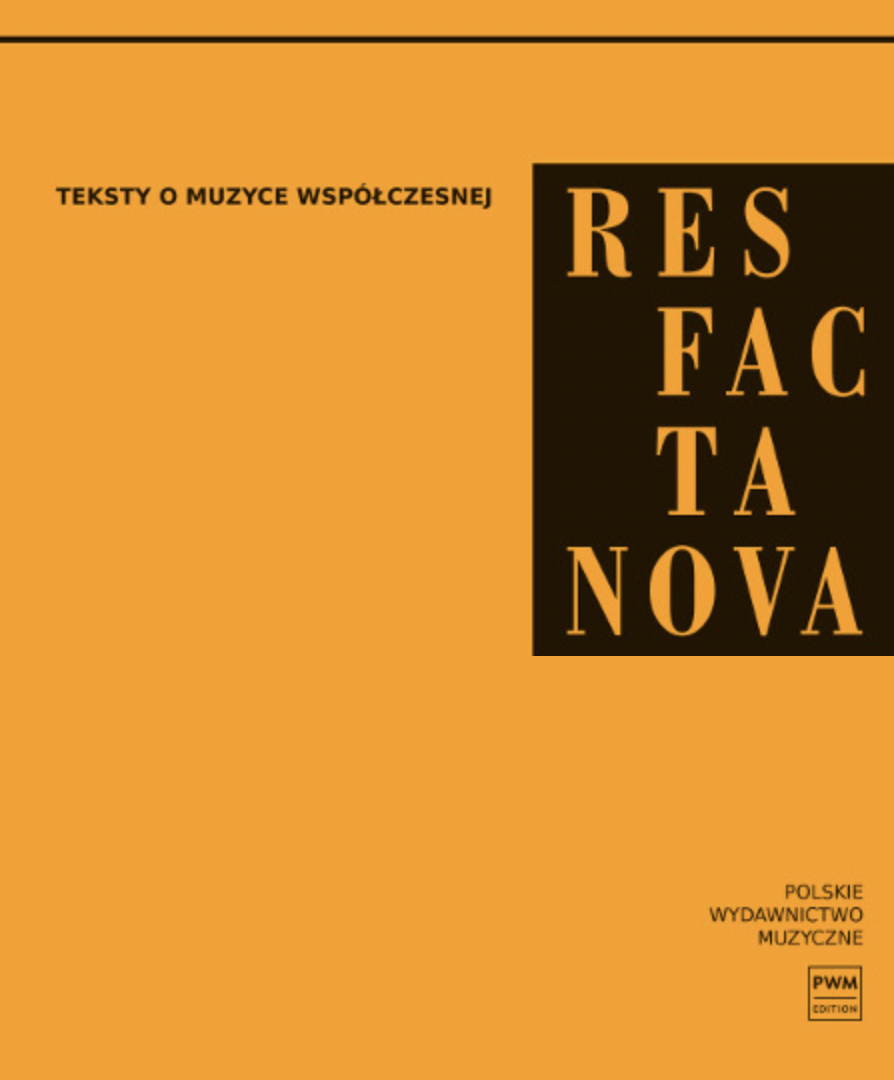Izotopie w praktyce analizy dzieła muzycznego – na przykładzie Arabesque Zygmunta Krauzego
Isotopies in the Practice of Analysing a Musical Composition, on the Example of Arabesque by Zygmunt Krauze
Author(s): Renata SkupinSubject(s): Fine Arts / Performing Arts, Music
Published by: Polskie Wydawnictwo Muzyczne
Keywords: semantic isotopy; isotopy of the plane of expression; semiotics of music; Arabesque; Krauze Zygmunt; Strzemiński Władysław'
Summary/Abstract: The aim of the paper is to reconsider the question of usefulness of the category of isotopy in semiotic analysis of a musical composition, on the example of Zygmunt Krauze’s Arabesque (1983) for prepared piano and instrumental ensemble. Adopting a suggestion by Nico-las Meeùs, the author undertakes an attempt to transpose Rastier’differentiation between semantic isotopy and isotopy of the plane of expression (isotopie de l’expression) into analysis of music. Following Michel Arrivé, she presents a model example of isotopic relations in the plane of expression (signifiant) from the novel Les jours et les nuits (Days and Nights)by Alfred Jarry, and finds that isotopy of the plane of expression is for linguistic semioticians an alternative to semantic isotopy in providing cohesiveness in the layer of signs that construct meaning. She then discusses the extent of application of isotopy in music semiotics and draws attention to the semantic capacity of this category in Eero Tarasti’s theory and interpretive practice, where it undergoes metaphorisation and a kind of universalisation. She also refers to the proposal of Jean-Pierre Bartoli to use isotopy in analysing Orientalistic exoticism, which constitutes an example of a return to the level of the simplest constitutive units and the condition of their iteration, i.e., to the structuralistic-semiotic conceptions of isotopy in the approach of Greimas. Moving on to an analysis of Krauze’s com-position, the author puts forward the view that Rastier’s categories of isotopy of the plane of expression as „conditions of grammaticality” (conditions de grammaticalité) of an utterance can only apply to specific cases of compositional techniques which are utterances in systemic „musical languages”, and this condition is not met in the case of the work analysed. The argumentation presented in the article is based on an analysis of particular features of the organisation of the sound material, the texture and syntax of Arabesque, as well as references to the composer’s claim to have been inspired by the mystical paintings of Władysław Strzemiński and the oriental connotations of arabesque-ness in music. In seeking the musical meaning of Krauze’s Arabesque the author focuses on identifying its intentio operis.
Journal: Res Facta Nova
- Issue Year: 2020
- Issue No: 21 (30)
- Page Range: 108-117
- Page Count: 10
- Language: Polish

